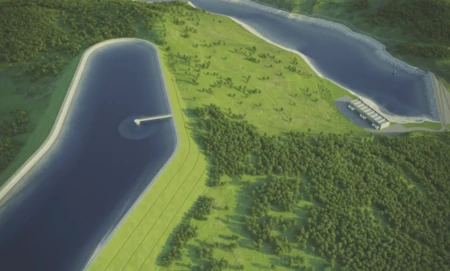Poland is currently facing significant challenges in the field of energy storage, which negatively impacts the stability of the energy system. Pumped-storage power plants, which play a crucial role in balancing power loads, have experienced a considerable decrease in efficiency during the summer months.
In July 2024, energy production from plants such as ESP Żarnowiec, Porąbka-Żar, Dychów, and Solina dropped from 1.0–1.2% to just 0.6% within the energy system. The main reasons for this decline include the modernization of the Porąbka-Żar plant and the hydrological drought, which limited the ability of the Solina and Dychów plants to effectively store energy. Consequently, the lack of sufficient water resources became particularly severe in the context of the growing surplus of energy generated by photovoltaics, which requires efficient storage.
To address these challenges, PGE has announced the construction of a new pumped-storage power plant in Młoty with a capacity of 1050 MW. This project is expected to increase the country’s energy storage capacity by 75%, although the realization of such investments is a time-consuming and costly process.
Meanwhile, increasing attention is being paid to alternative storage technologies, such as lithium-ion batteries. Innovations from companies like Tesla and China’s CATL offer greater capacity and longer battery life, which may help stabilize Poland’s energy system in the future.
The development of energy storage infrastructure, both in traditional and modern forms, will be crucial to ensuring a sustainable and stable electricity system in Poland.
For more information, check the article: Business Insider

